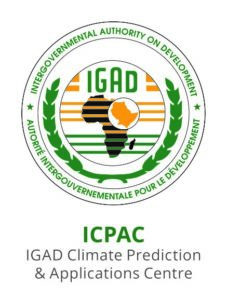The IGAD Climate Prediction and Applications Centre (ICPAC) through the support of GCRF African-SWIFT, W2SIP and ForPAc projects produced the first objective consolidated forecast for the June-September 2019 rainfall season.
With objective forecasts, more comprehensive evaluations can be conducted and hence the potential to improve the forecasts over the region. Improved seasonal forecast methods make the climate outlook more reliable and effective for enhancing resilience to climate related risks over Eastern Africa.
For the last 20 years a semi-subjective forecast method was applied to evaluate the forecast in the region. These type of forecasts have several limitations. First, they are not available in digital/numerical form and thus cannot be objectively verified and their skill assessed. Second, the forecasts cannot be used in application models. Third, the forecasts cannot be identically reproduced or replicated by a different forecast group due to the subjective nature of arriving at the final climate outlook.
However, since May 2019, with the introduction of objective forecasts, a new era in seasonal forecast services has started, when the Greater Horn of Africa Climate Outlook Forum (GHACOF), National Meteorological and Hydrological Services (NMHS), climate experts, researchers and international climate experts meet at ICPAC to develop the objective seasonal outlook.
ICPAC (with additional support from the UK government’s WISER-W2SIP, ForPAc-SHEAR and GCRF African-SWIFT projects and a new high power computing cluster) was able to be one of the first Regional Climate Centres to adopt the objective approach, based primarily on climate models.

To produce the objective consolidated forecast, predictions from 7 global dynamical models have been used. The 7 models participating in multi-model ensemble are CMC1-CanCM3, CMC2-CanCM4, CFSv2, CCSM4, GFDL-FLOR-AO2, ECMWF and GloSea5.
The models utilised were initialised in May and statistically downscaled using 2 distinct techniques: (1) Ensemble linear regression technique and (2) Canonical Correlation Analysis as implemented in the Climate Predictability Tool (Mason and Tippett, 2017).
The forecasts produced using the two techniques were then combined to form an objective forecast for the first time over the region.
For more information please visit: http://bit.ly/2DlyDuv
